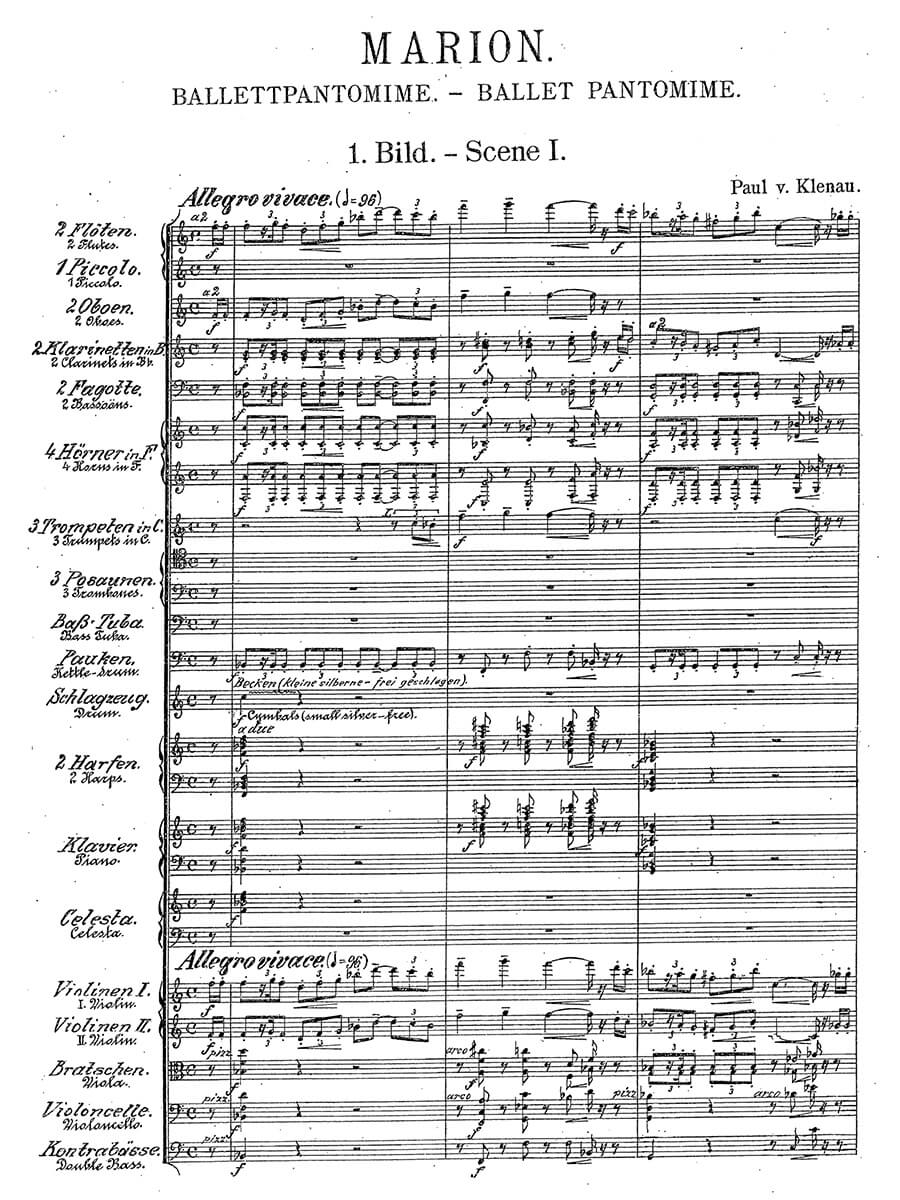Marion, Ballet pantomime
Klenau, Paul von
48,00 €
Preface
Paul von Klenau – Marion, Ballet pantomim
(b. copenhagen, 11. February 1883 – d. Copenhagen, 31. August 1946)
Preface
The eventful artistic career of Paul von Klenau spanned four decades and geographically spread over three countries. Born on February 11, 1883 in Copenhagen, he moved to Berlin after his high school graduation in 1902, where he enjoyed a comprehensive education in the composition class of Max Bruch at the Berlin Academy of Arts. He continued his studies in Munich under Ludwig Thuille until his death. Among his first major works are three grand symphonies, some of which were premiered by renowned conductors: The First Symphony was given its first performance at the Munich Tonkünstlerfest in 1908, the Second Symphony under Hans Pfitzner was premiered in Strasbourg in 1911, and in 1913 Ernst von Schuch debuted the Third Symphony for Choir and Orchestra in Dresden. Klenau received a position as Kapellmeister at the Freiburg Stadttheater in 1914, which he gave up shortly after the outbreak of World War I to return to Denmark. In the years during and after the First World War he was extremely productive as a composer, producing, among others, the grand operas König Tannmoor as well as Kjärtan und Gudrun, the ballet pantomimes Klein Idas Blumen and Marion and the full-length setting of Die Weise von Liebe und Tod des Cornets Christoph Rilke. While both operas were still firmly committed to German Romanticism, Klenau was increasingly influenced by current musical trends, above all Impressionism, Viennese Expressionism and Neo-Classicism. His attempt to establish a 20th century „opera buffa“ with the musical comedy Die Lästerschule, the composer himself declared to have failed after the premiere in Frankfurt in 1925 and broke off work on a similar opera based on Ludvig Holberg‘s Jeppe vom Berge.
In the 1920s Klenau also appeared as a conductor, founded the „Danish Philharmonic Society“ in Copenhagen, as whose artistic director he regularly performed works by contemporary composers until 1926, and became choirmaster of the Vienna Singakademie, whose director he became later. An ear disease finally forced him to withdraw from concert life. After several failed attempts as a dramatist and writer, he turned once again to composition and, with the completion of the music drama Michael Kohlhaas, freed himself from the artistic crisis into which the failure of the Lästerschule had plunged him. In the following years he wrote a Fourth Symphony, which has not been performed until today, and two further operas, Rembrandt van Rijn and Elisabeth of England, both of which were premiered in the „Third Reich“. …
Full preface / Komplettes Vorwort > HERE
Score Data
| Genre | Ballet |
|---|---|
| Size | 210 x 297 mm |
| Printing | Reprint |
| Pages | 232 |
